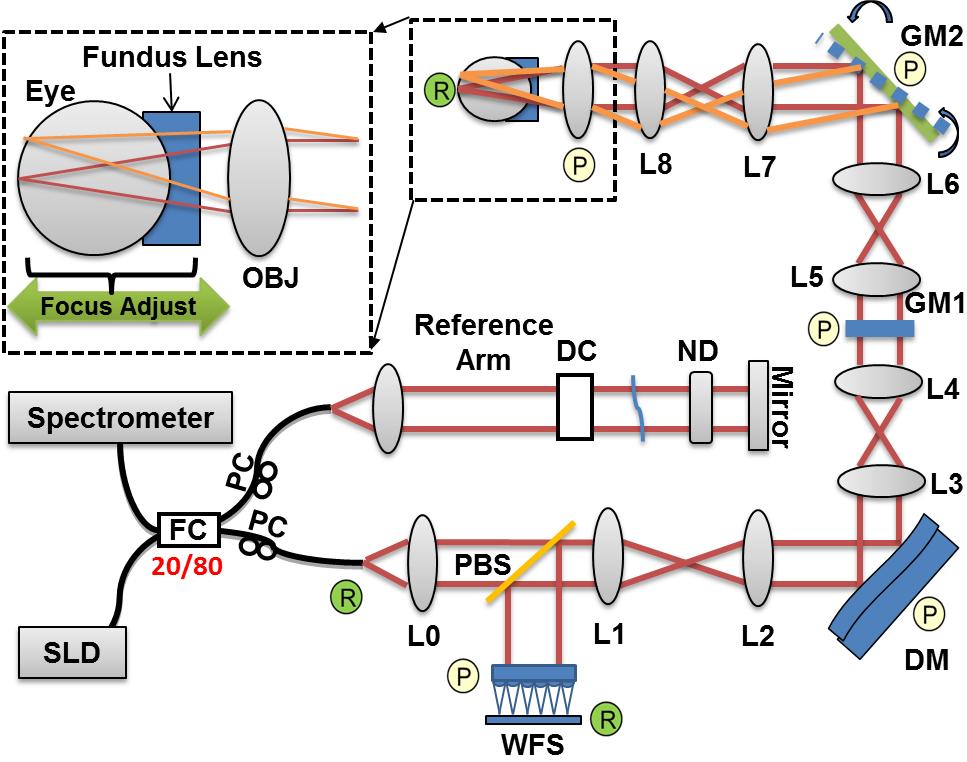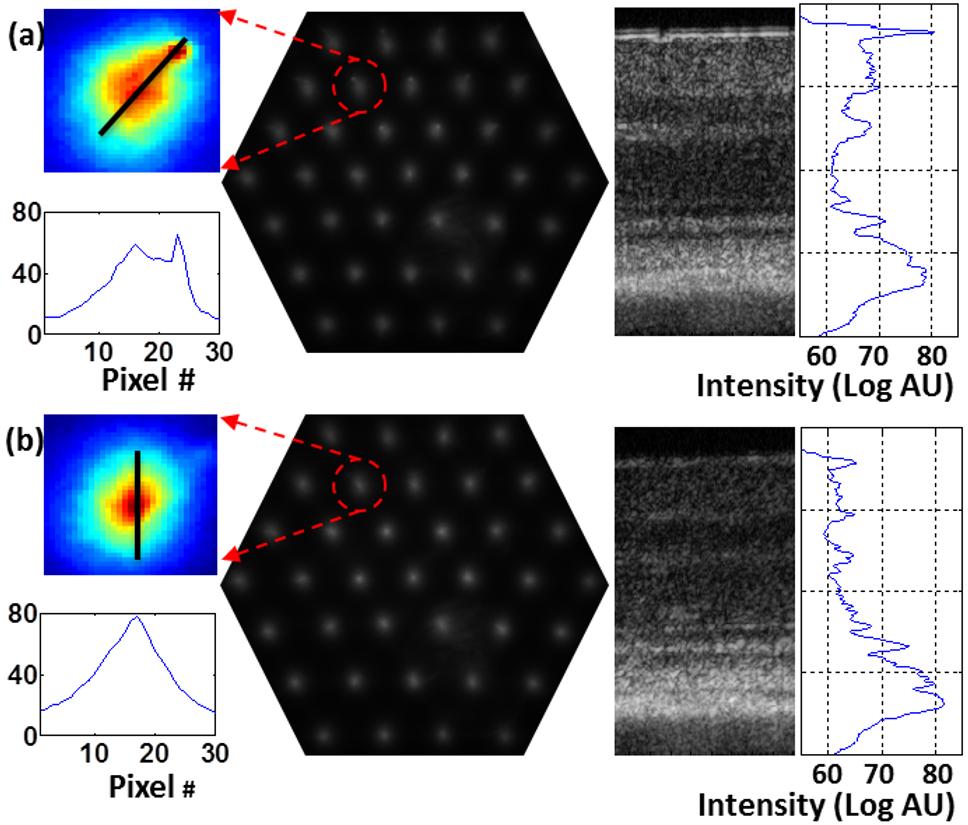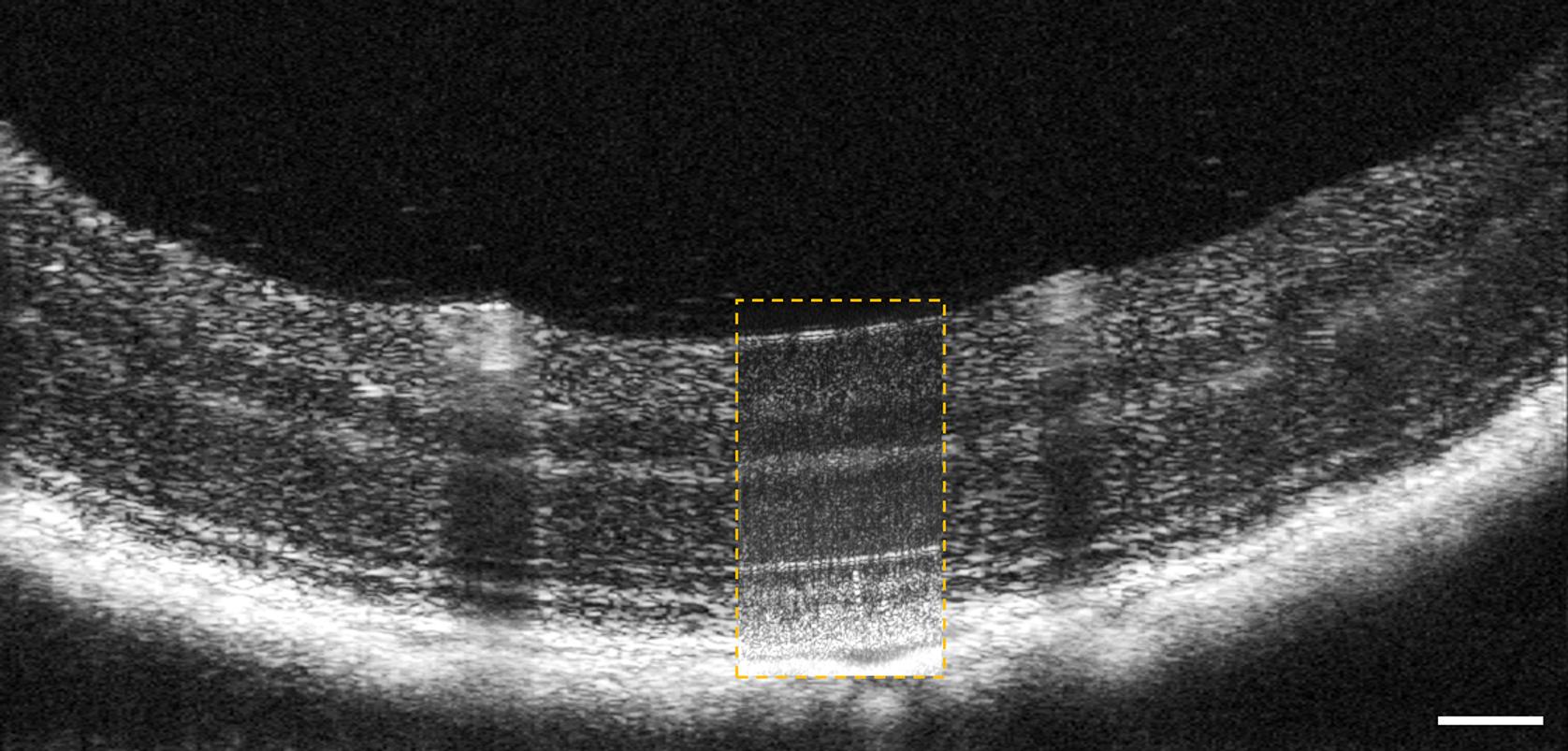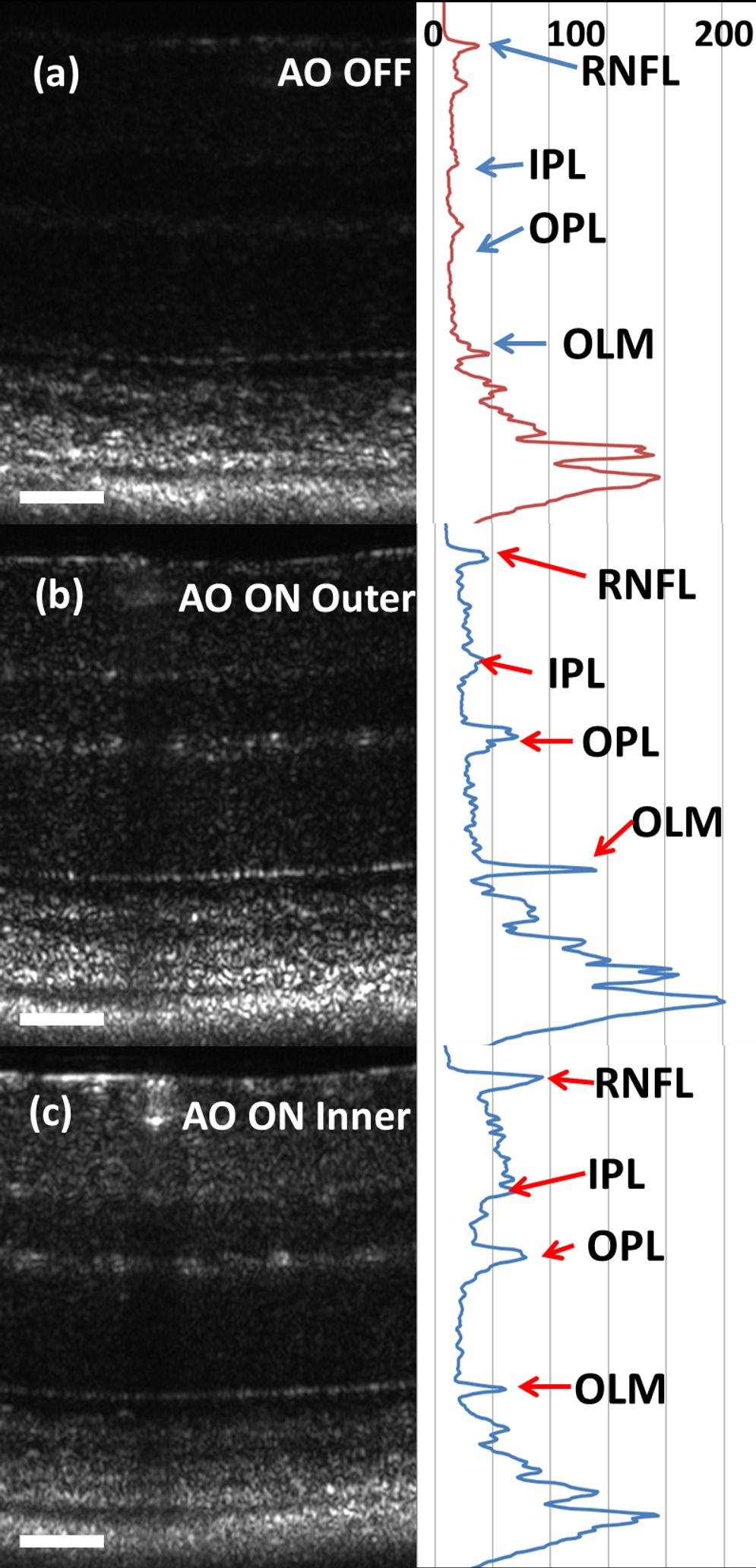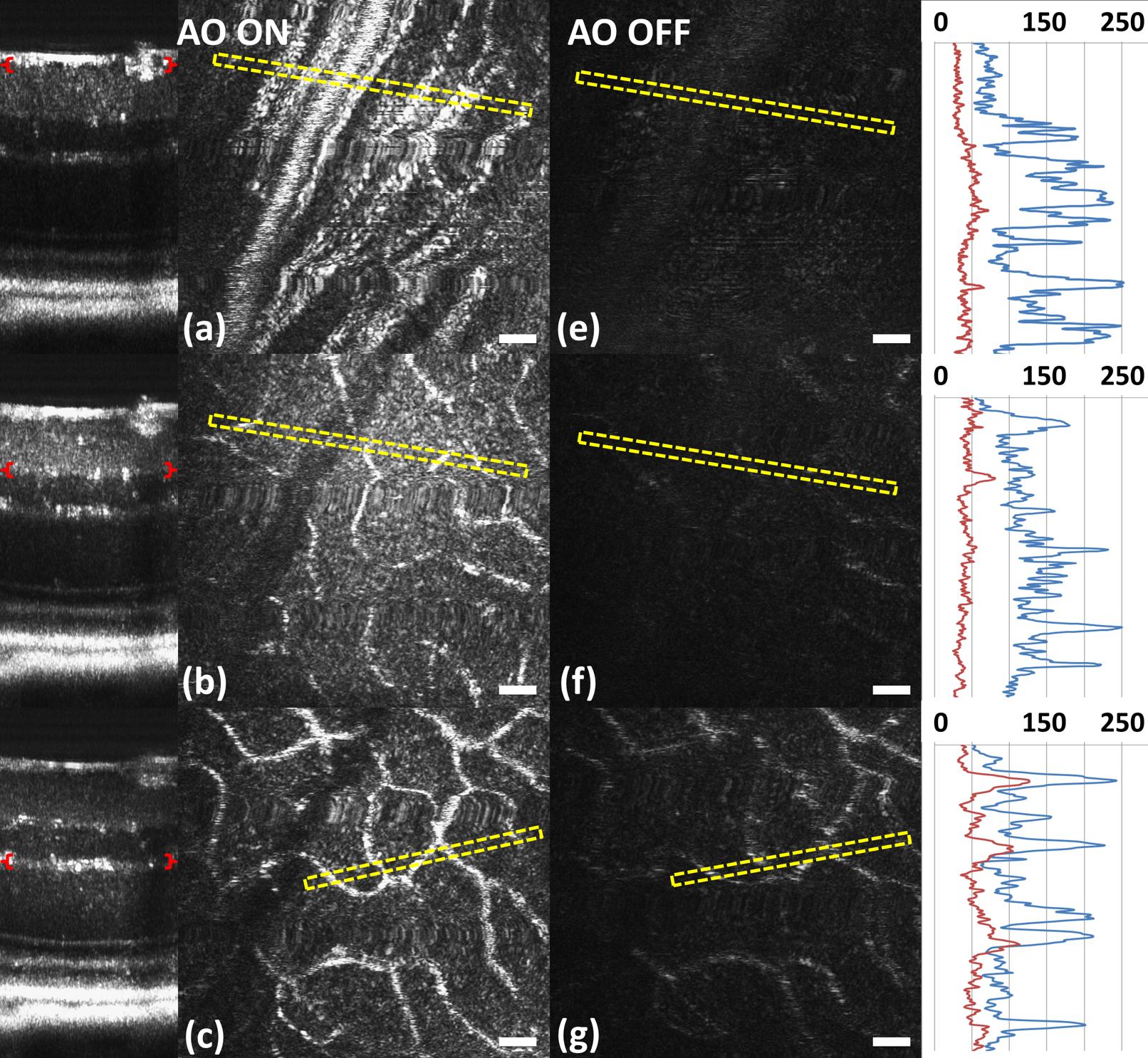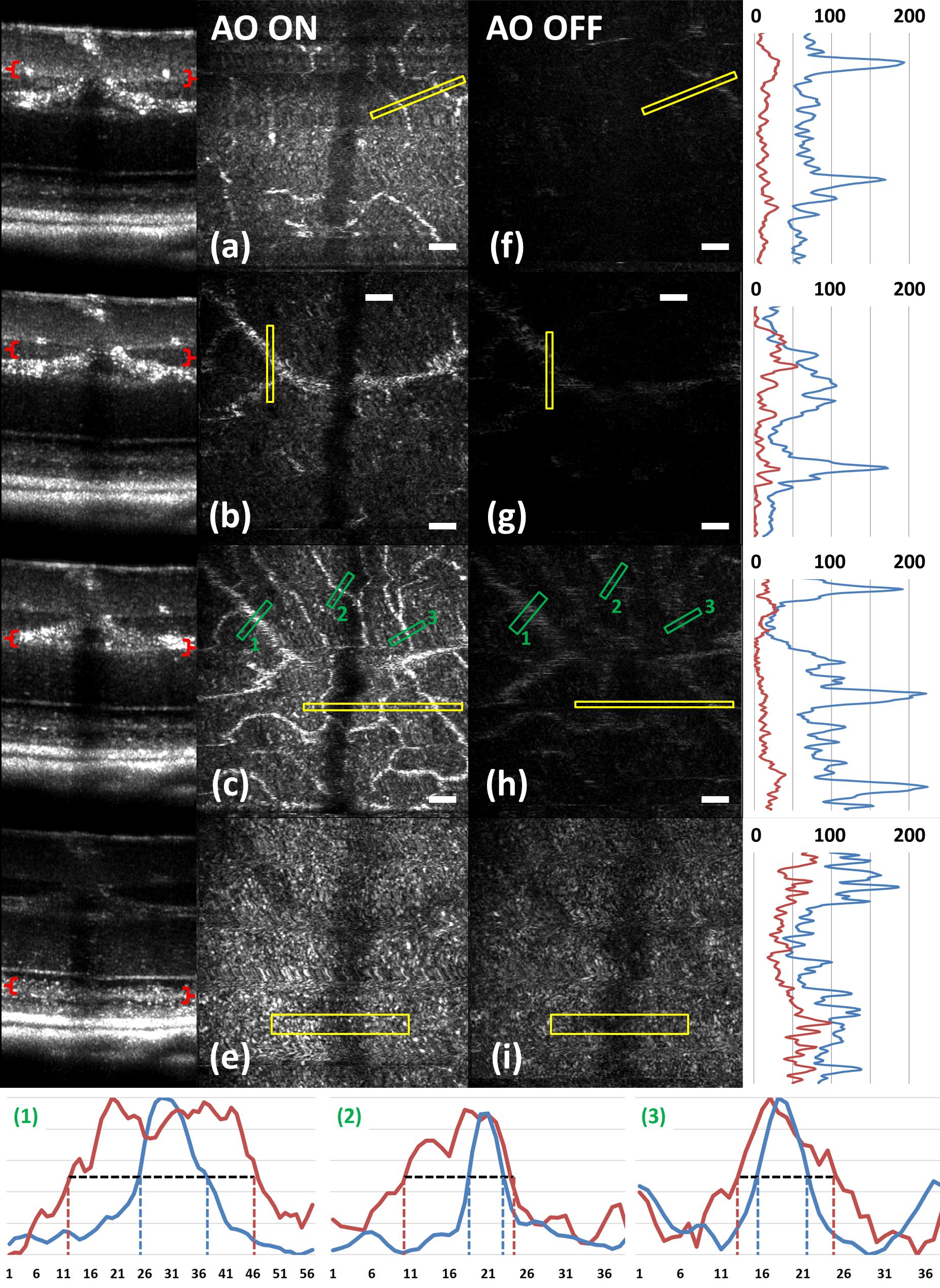Adaptive optics optical coherence tomography for in vivo mouse retinal imaging
Small animal models of retinal diseases are important to vision research, and noninvasive high resolution in vivo rodent retinal imaging is becoming an increasingly important tool used in this field. We present a custom Fourier domain optical coherence tomography (FD-OCT) instrument for high resolution imaging of mouse retina. In order to overcome aberrations in the mouse eye, we incorporated a commercial adaptive optics system into the sample arm of the refractive FD-OCT system. Additionally, a commercially available refraction canceling lens was used to reduce lower order aberrations and specular back-reflection from the cornea. Performance of the adaptive optics (AO) system for correcting residual wavefront aberration in the mice eyes is presented. Results of AO FD-OCT images of mouse retina acquired in vivo with and without AO correction are shown as well.
Corresponding information:
Please send an e-mail to yjian@sfu.ca for more information.
Figures and Videos
Reference
Y. Jian, R.J. Zawadzki, M.V. Sarunic. "Adaptive optics optical coherence tomography for in vivo mouse retinal imaging." Journal of biomedical optics 18, no. 5 (2013): 056007-056007.

